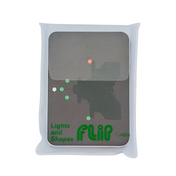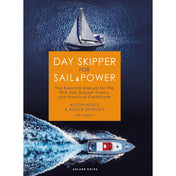NAVBasics (3 Book Set)
| Author: | Abdul Khalique |
|---|---|
| Edition: | 2023 |
| Format: | Paperback |
| Size: | 240 x 160 mm |
NAVBasics (3 Book Set) is backordered and will ship as soon as it is back in stock.
Couldn't load pickup availability
Delivery Information
Delivery Information
We aim to dispatch all orders by the next business day, but we're a small business and sometimes when it's busy it may take a little bit longer. If there's going to be any delays we'll get in touch and keep you up-to-date.
Shipping is free for all orders of £50 or more!
We work with Royal Mail, DPD and DHL to offer the most convenient delivery options to our customers.
Friendly Advice
Friendly Advice
Chris is a Master Mariner and knows a thing or two about seafaring. If you need any help then don't be shy - send us an email or get in touch using the WhatsApp icon.
Easy Returns
Easy Returns
Not what you were looking for? No problem. We can accept returns of items in as-sold condition for up to 30 days (maybe a bit longer but don't tell anyone).
Just let us know and we'll sort everything out, including the shipping cost back to us.
Unfortunately this doesn't apply to Print on Demand charts as they are correct at the time of printing.
Of course if there's any faults or damage then let us know and we'll make it right!
Three Volumes Covering the Full OOW Navigation Syllabus
NAVBasics (3 Book Set): Third Edition provides a comprehensive and accessible introduction to the full navigation syllabus at OOW level. Written in plain English and updated in 2023, this boxed set is ideal for cadets and junior officers preparing for exams or consolidating classroom learning.
Each volume has been carefully structured to reflect the logical flow of navigation training. Volume 1 covers the Earth, coastal navigation, tides, and passage planning. Volume 2 moves into sailings, ocean and offshore navigation, and celestial techniques. Volume 3 focuses on watchkeeping and electronic navigation, including radar practices.
Filled with diagrams, worked examples and exercises, each book concludes with syllabus-based reference material and appendices to support further study and exam preparation. This set has been authored by a Senior Navigational Lecturer with international academic and seafaring credentials.
Table of Contents
- Volume 1: The Earth, Coastal Navigation, Tides & Passage Planning
- Volume 2: Sailings, Ocean Offshore and Celestial Navigation
- Volume 3: Watchkeeping and Electronic Navigation
About the Author
Abdul Khalique MICS, PG Cert. (Shipping), MSc. (CBIS), HND Nautical Science, BSc. (Maritime Studies), is a former cadet awarded the President of Pakistan Gold Medal and the Merchant Navy Association (Tasmania) prize. He holds an MSc in Computer-Based Information Systems from the University of Sunderland and a Graduate Certificate in Shipping from the New Zealand Maritime School.
After sailing professionally, Abdul pursued an academic career, becoming a course developer and lecturer at the NAFC Marine Centre. He is a member of the Institute of Chartered Shipbrokers and a respected contributor to cadet navigation training.
-
AuthorAbdul Khalique
-
Edition
-
Format
-
Size
-
Pages
-
ISBN
Payment & Security
Payment methods
Your payment information is processed securely. We do not store credit card details nor do we have access to your credit card information.








